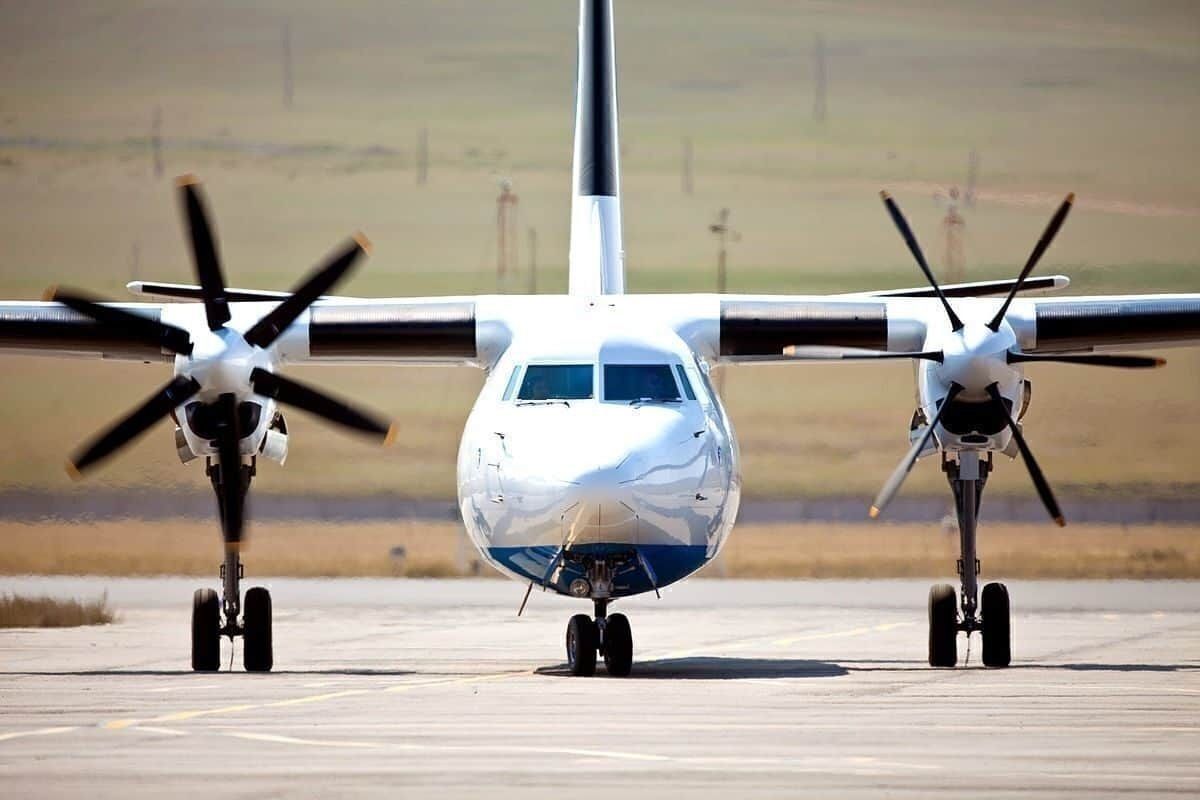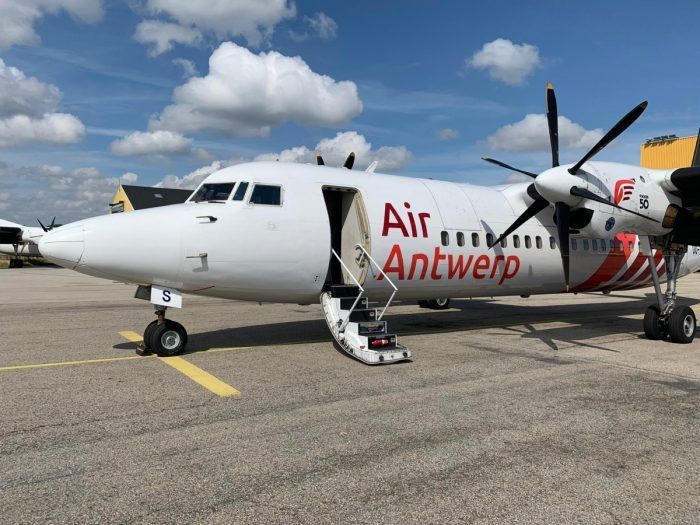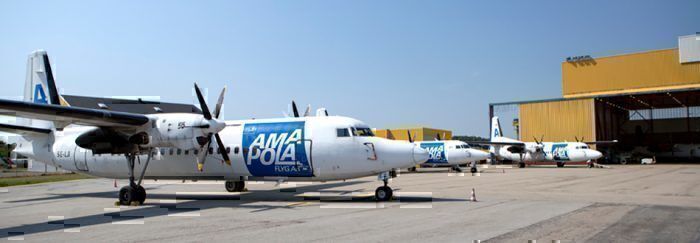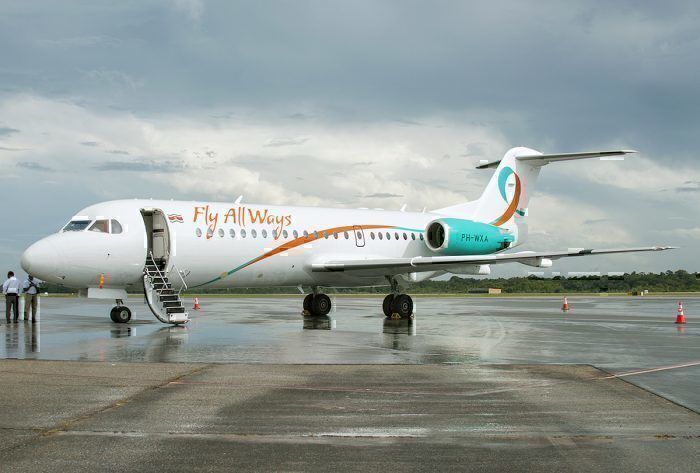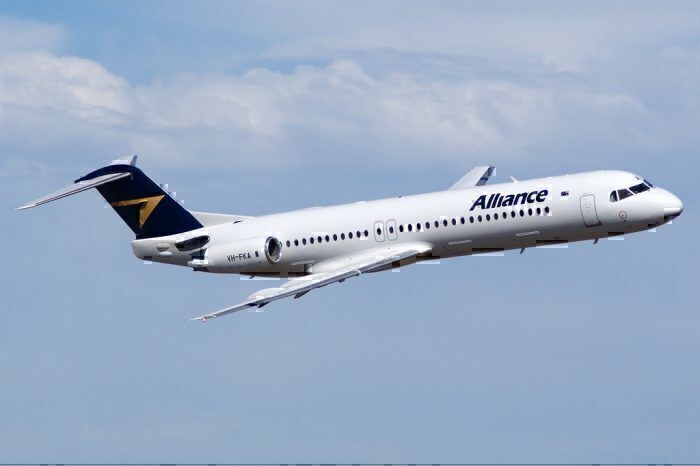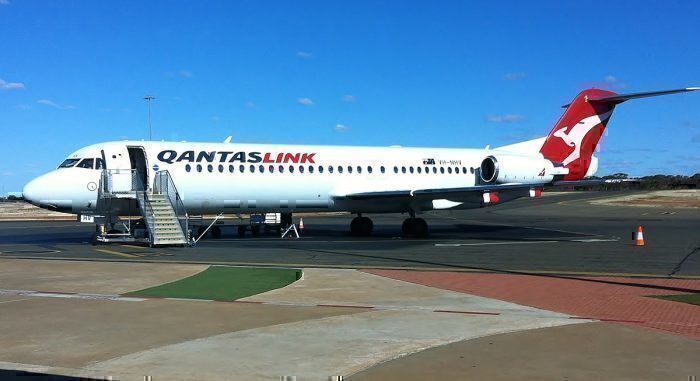Dutch aircraft company Fokker closed its doors in 1996, following almost a century of operation. Despite the company’s demise, many of its aircraft are still flying today. We take a look at which airlines still operate Fokkers, and where you can go to fly one.
Since the launch of Air Antwerp’s Fokker F50 service from London City, I’ve become slightly obsessed with these little Fokkers. In these modern times when most planes look very similar, the F50 really caught my eye as something rare and unusual. Needless to say, I’m wriggling with anticipation to get on board Air Antwerp’s little Fokker, but until I can, I thought I’d take a look and see who else was flying these increasingly rare Dutch made planes.
Here’s what I found out.
The Fokker 50
As much as I want to fly on all the Fokkers, it’s the F50 that really does it for me. The turboprop-powered, pointy-nosed beauty just oozes retro-coolness and has proven itself to be a reliable workhorse for many decades. Out of 208 ever built, 88 are still in service. As well as Air Antwerp with their new London City service, you can also find little Fokkers flying for a handful of other airlines.
The largest operator by far is Amapola Flyg, a Swedish regional airline which was previously a cargo only operation. However, since 2018, it started running passenger services too. All the airline operates is the Fokker F50, of which it has 18 according to Planespotters. Of these, eight are set up as cargo only aircraft, so you’ll find just 10 little Fokkers with this carrier. All are around 30 years old.
Skyward Express, a regional carrier based out of Nairobi Wilson (WIL) in Kenya, has 12 F50s in its current fleet. Air Panama is another operator, a South American regional carrier with a motley assortment of small aircraft. They have just six F50s in the current fleet, although two are in storage.
The final operator on our list is Alliance Airlines, the Australian regional airline. Their small fleet of five F50s has an average age of 25.7 years, making them one of the newer fleets of Fokkers around. Aside of these carriers, there are a handful of other operators which have one or two F50s on lease, including BRA – Braathens Regional Airlines, Niger Airlines and FlyCAA, as well as a few military and governmental operators.
The Fokker F70
The middle sized Fokker, the F70, is the slightly bigger brother of the F50, and has been flying since 1993. Overall, 47 of the type were built, with 23 remaining in service around the world. Although the F70 was well thought out, being the notional replacement for the popular F28, and should have done alright for itself considering the lack of competition in the regional, 70 seat market at the time.
However, the sales figures speak for themselves. This makes the F70 the rarer Fokker to see in action today. In fact, the only airlines we can find with more than a couple in service are Alliance Airlines with nine, and Air Niugini with six.
Suriname based Fly All Ways has two and Tus Airways four, while PNG Air, Wayraperú and TransNusa Air Services all have one apiece.
The Fokker F100
The biggest of all the Fokkers is the F100, a medium sized twin turbofan jet airliner, and the largest plane ever to be built by the Dutch company. When it was launched in 1988, there were few other aircraft in the 100 seat short range jet class, so it did probably the best out of all the Fokkers produced.
Altogether, 283 big Fokkers were built, of which over 100 are still in operation. With the last being built in 1997, that makes the youngest of this breed over 20 years old. The fact that they’re still in service is a testament to the build quality and operational efficiency of these aging jets.
Today, we’ve found 20 operators of the F100. The largest fleets can be found at:
- Iran Aseman Airlines: 20 in total, although 13 are in storage
- Alliance Airlines: 24 in operation
- QantasLink: 17 in operation
- Virgin Australia Regional: 14 in operation
- Air Niugini: 7 in operation
- Air Panama: 5 in operation
- Bek Air: 6 in operation
There are a number of other carriers who have one or two in their fleets, including Avanti Air, Kish Air, Montenegro Airlines and Tus Airways.
Where to go to fly a Fokker
Without a doubt, Australia is a haven for a load of old Fokkers. If you want to fly this iconic and increasingly rare aircraft, down under is the place to go. Although most are used for mining activities and FIFO contracts, there’s still a good chance of snagging a ride on a Fokker in Aus.
Alliance Airlines is probably your best bet, with 47 Fokkers still in service. Network Aviation also has a number of Fokker 100s, and since it was bought out by Qantas in 2011, some fly for QantasLink in full flying kangaroo livery. The final carrier to look at is Virgin Australia, who bought out SkyWest in 2013 and inherited 14 Fokkers.
However, for those of us not too close to these antipodean operators, the most accessible Fokker has to be Air Antwerp’s. I, for one, am very excited to see this pointy-nosed plane for myself! Have you flown any Fokkers? Tried out Air Antwerp yet? Let us know all about it in the comments.

